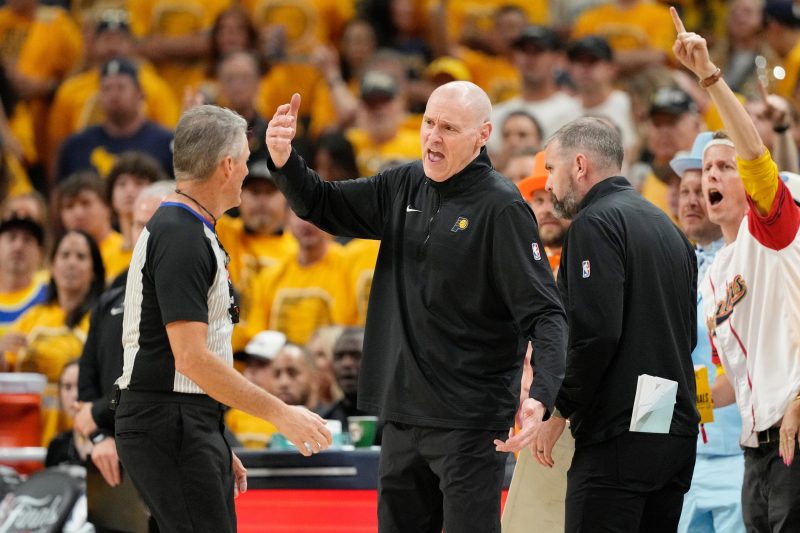Can new commission police college athlete pay? Good luck with that.

In the handful of days since details became public about how the new rules around college athlete pay will work, there are still many unanswered questions.
But the one that seems most important to the coaching staffs that must build rosters is as old as time: Will the new College Sports Commission truly be able to police the money that will inevitably change hands under the table?
The thing about the so-called ‘Wild West’ era of name, image and likeness, as unregulated and messy as it seemed at times, was that everyone knew the score. It might not seem logical for a booster collective to pay $750,000 for an unproven left tackle, but it was, in a strange way, all above board and out in the open.
The new world after the House vs. NCAA settlement is going to be different in several ways, at least on paper:
- A $20.5 million “benefits cap” per school that will go up incrementally every year
- An online clearinghouse run by the prominent accounting firm Deloitte where athletes have to register outside NIL deals over $600 for approval, powered by an algorithm that measures market value. The idea is to sniff out booster-fueled deals that have created what some administrators like to call a fake market for players, while allowing athletes to pursue the so-called ‘real NIL’ like product endorsements.
- A still somewhat opaque arbitration process an athlete can use if a deal gets rejected, where a supposedly independent person (or persons) will have the final say on whether a deal goes through.
- Some kind of subpoena power that would be used in such a process, though it’s unclear exactly how far-reaching that power will be (Are we talking about bank and tax records? Text messages?) and the impact of non-compliance. Would a court of law really intervene to enforce the subpoena?
- And, perhaps most significantly to the fan experience that has been turned upside down by a completely unregulated transfer environment, schools will have the ability to offer multi-year contracts with buyouts and penalties. If, for instance, a player wants to transfer after the first year of a two-year deal, the buyout paid by the new school would count against its cap.
We know all this stuff will, at some point, be subject to further lawsuits and scrutiny unless there’s some kind of Congressional intervention. The entire idea of imposing certain earning limits on athletes without some type of collective bargaining process is probably a loser in the long-term.
Even in the halls of NCAA headquarters these days, there’s a hint of a Jerry Seinfeld attitude about whether some of these limits will hold up after years of getting their rear end handed to them in court: Good luck with all that. But ultimately, this is what the power conferences wanted. This is their show. They created the CSC, they agreed on these rules and they’re the ones who ultimately must figure out something else if this doesn’t work.
Some of the people that put a lot of time and effort into creating this new setup are understandably annoyed by cynical commentary about whether it will work before it even gets off the ground.
However, many of the biggest cynics are inside their houses.
Based on the messages I’ve received from coaches who – let’s face it – understand how the real world works a whole lot better than the C-suite folks, there are legitimate concerns about whether the CSC and Deloitte will truly be able to follow the money.
What if, for instance, an athlete strikes a deal with a booster and just … doesn’t report it to the clearinghouse? Will there truly be a mechanism to find it and police it? That was always the NCAA’s problem with enforcement: It was difficult, if not impossible, to compel cooperation without subpoena power.
Though arbitration proceedings like the one outlined in the House settlement will provide some type of subpoena power, how far reaching will it be? Will its power vary by state? Will it truly be enforced? And if someone gets busted, will the school avoid penalties by claiming they didn’t know? If so, we’re kind of right back where we started.
Additionally, as sports attorney Darren Heitner pointed out this weekend on X, the language in the rules makes it somewhat questionable whether Deloitte could reject a deal funded by a booster collective but presented by a corporate entity like a car dealership being used as a pass-through.
Don’t scoff: Lack of imagination is what got these guys into a bad situation in the first place. When NIL became legal in 2021, few saw the true impact of collectives coming.
And the whole thing about buyouts limiting transfers? What if agents just simply don’t allow their players to sign a contract that would truly limit their ability to change schools without repercussions for themselves or their new school? It’s not like athletic departments have done a great job negotiating those things when it comes to their own coaching contracts.
At this stage of the game, it’s not productive to say the new system is doomed. While it seems a longshot given the current political climate and governmental priorities, perhaps Congress will come in and codify this stuff to some extent. And maybe all of the guardrails built into the CSC will keep things orderly to some extent.
But now that power point presentations and Q-and-A documents are being circulated in advance of the July 1 implementation, the people who deal with recruiting realities on a day-to-day basis are wondering whether they’re in for a fair fight or this is simply a new way for cheaters to perform a very old trick.
Better to poke those theoretical holes in it now, because in just a couple weeks, you can guarantee some people are going to try to find real ones.




